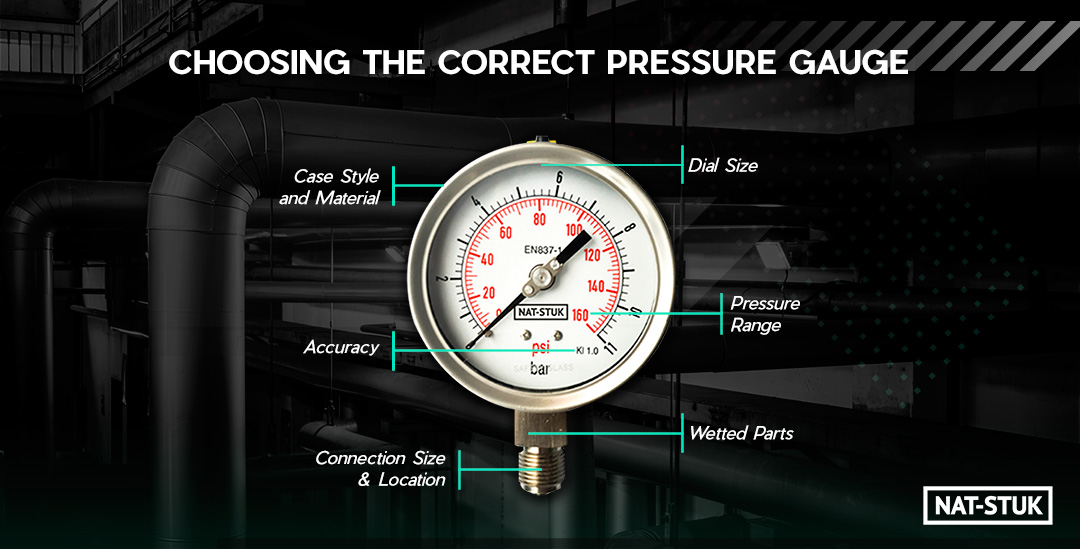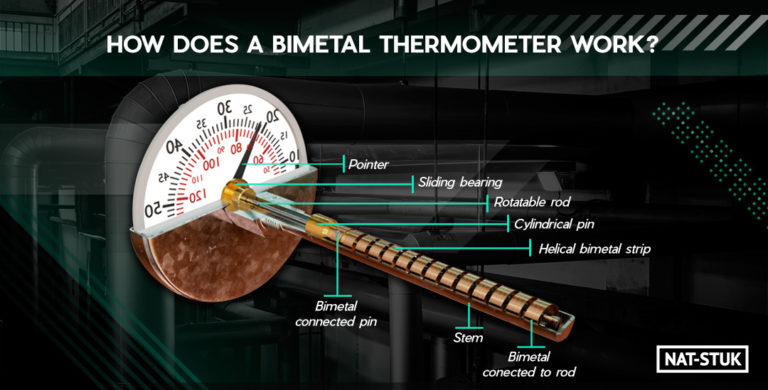When choosing the correct pressure gauge it is important to consider the following factors:
- Pressure Range
- Dial Size
- Case Style and Material
- Wetted Parts
- Accuracy
- Connection Size
- Connection Location
Pressure Range:
ASME B40.100 recommends that normal operating pressure be confined to 25%-75% of the scale. If pulsation is present in the process, maximum operating gauge pressure should not exceed 50% of the full-scale range.
Dial SIze:
Pressure gauge dial sizes range from 1.5˝ to 10˝ diameters. Generally, readability requirements, space limitations and required gauge accuracy determine dial size. Accuracies of 0.25% or 0.5% generally have dial sizes of 4˝ or larger since more dial graduations are required.
Case Style and Material:
Environmental considerations include ambient temperature, air-borne particulate, condensation, humidity, water and chemicals, all of which can affect gauge performance. Ambient temperature may affect the accuracy and integrity of the gauge. . When ambient conditions are corrosive, contain a large number of particulate or if the gauge will be exposed to a wet or humid environment like humidity, wash-downs or rain, specify a gauge that is weatherproof/hermetically sealed or liquid filled.
Wetted Parts:
The wetted parts of the pressure gauge, the bourdon tube and socket must be compatible with the process media. If not compatible with the wetted parts of the gauge, corrosion will occur. Corrosion of gauge wetted parts will cause gauge failure and safety issues. When the gauge wetted parts are not compatible with the process media, a diaphragm should be used.
Accuracy:
For a mechanical pressure gauge, accuracy is defined as a percentage of the full-scale range. While requirements differ from one industry to another, the following are general guidelines: • Test Gauges and Standards: 0.25% through 0.10% full scale accuracies. • Critical Processes: 0.5% full scale accuracy. • General Industrial Processes: 1.0% accuracy. Less Critical Commercial Uses: 1.6% to 2.5% accuracy.
Connection Size:
Pressure gauges are available with a variety of connections including NPT, BSP, BSPT, etc. Factors to consider when selecting a pressure gauge connection include process pressures, gauge size and weight, space limitations, leak integrity, and past experience.
Connection Location :
Consider the following mounting options when selecting a pressure gauge: Stem mount lower connect, Wall/surface mount lower connect, Panel mount back connect, U-clamp flush mount back connect, for panel mounting, Front flange flush mount back connect, for panel mounting
Follow us on Twitter and Instagram
We invite you to check out our Blog
WE LISTEN TO YOUR NEEDS AND MAKE IT SIMPLE
For more information about our products, please contact our sales team at: contact@usglobalbusiness.com




